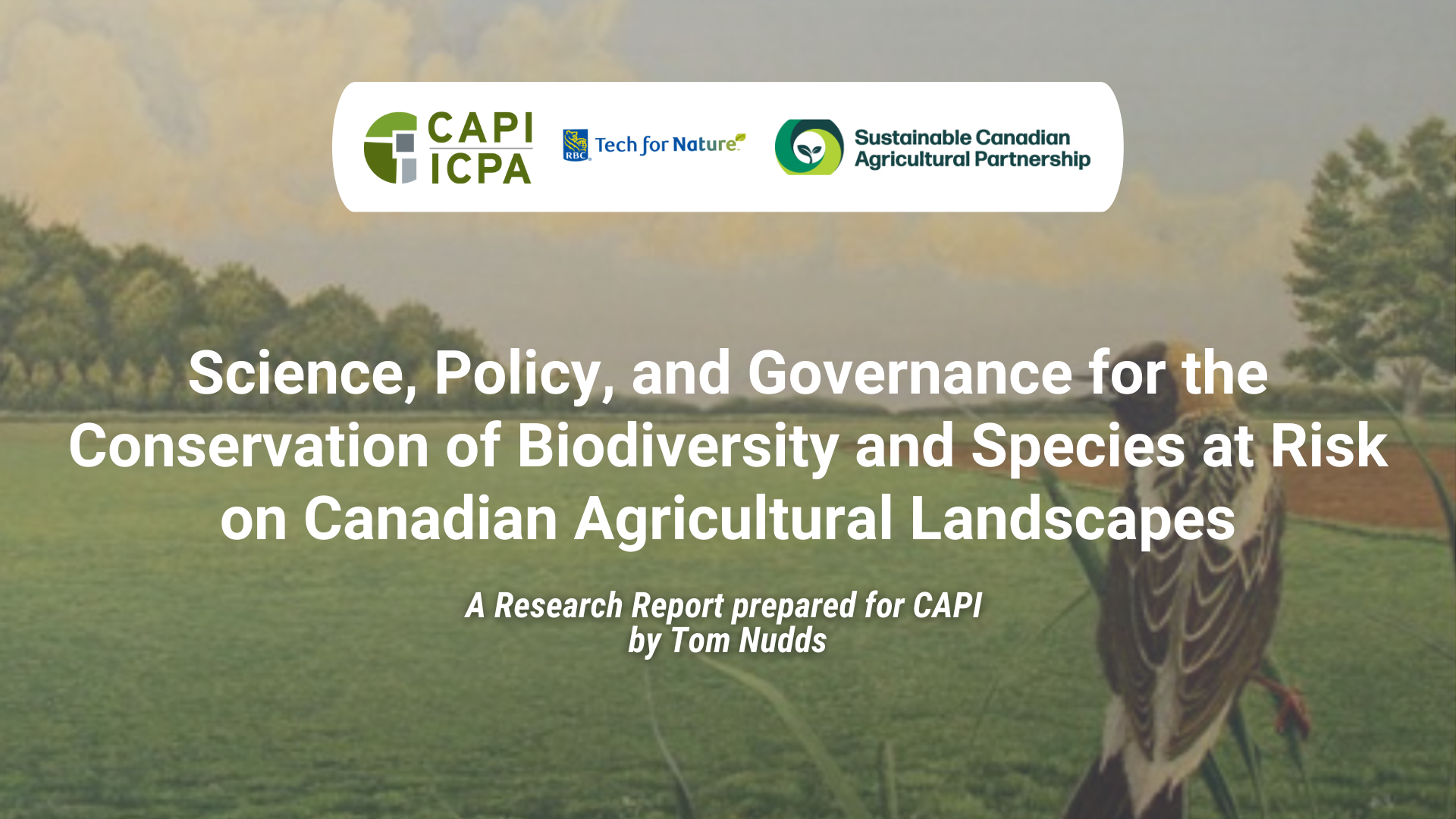Science, Policy, and Governance for the Conservation of Biodiversity and Species at Risk on Canadian Agricultural Landscapes

Note from CAPI
This report calls for a more inclusive approach to species-at-risk (SAR) conservation on Canada’s agricultural landscapes. Current policies, scientific uncertainty, and limited engagement with producers often result in higher costs and delayed actions. To fix this, the report recommends participatory science—bringing producers, Indigenous communities, and other stakeholders into decision-making from the start. Key policy shifts required include providing legal assurances to encourage landowner participation, improving how we assess species status and threats, and investing in open, collaborative science. The result: faster, more effective, and locally supported conservation that works for both the conservation and the agri-food sectors.
This report is part of CAPI’s Policies for Land Use, Agriculture & Nature (PLAN) program focused on advancing solutions that enable us to feed the world sustainably, protect farmland, preserve nature and biodiversity, and promote food security. The initiative is supported in part by the RBC Foundation through RBC Tech for Nature.
Key Takeaways
- Uncertainty is costly and everybody’s problem. Scientific uncertainty about species at risk (SAR) status and threats leads to delayed decisions, missed conservation opportunities, and high costs for governments, producers, and conservationists alike.
- Focus needs to be on cause. Automatic listing is a silver bullet aimed at a wicked problem. Discerning the states of SAR and their causes is critical to avoid or reduce opportunity costs.
- Producers are critical partners. Unlocking landowner participation is critical, by addressing concerns about liability and privacy in return for land access will enable improved data collection critical to reliable and robust policy decisions.
- Better science starts with better collaboration. A successful conservation approach depends on inclusive, open science. A pan-Canadian, participatory approach—where farmers, Indigenous knowledge holders, and researchers co-design solutions—will improve species-at-risk assessment and recovery efforts.
